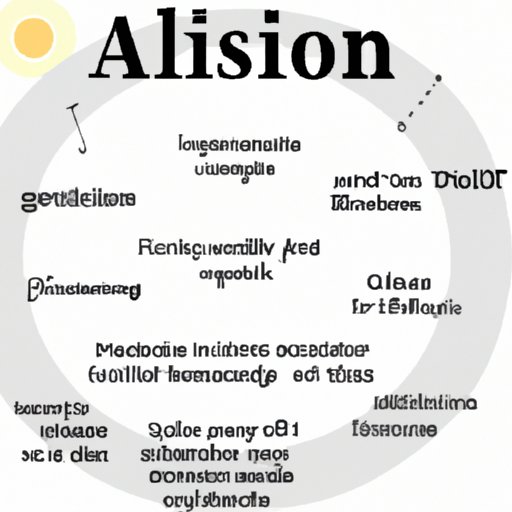
Exploring the Definition of Allusions in Literature
The practice of using allusions in literature has been around for centuries, but what exactly is an allusion? An allusion is a reference to an event, person, place, or thing from history, culture, or any other form of knowledge. It can be subtle or overt, and its purpose is to create a connection between the writer’s work and the referenced material. By making this connection, the author can add depth, meaning, and symbolism to their work.
There are many different types of allusions that can be found in literature. Historical allusions refer to events, persons, or places from history. Mythological allusions reference Greek and Roman gods and goddesses, as well as stories and characters from classical mythology. Biblical allusions refer to people, places, and stories from the Bible. Cultural allusions are references to popular culture, such as movies, television shows, and books. Literary allusions are references to other works of literature. These are just a few examples of the types of allusions that can be found in literature.

A Guide to Understanding Allusions in Literature
Now that you know what an allusion is, how do you go about identifying and analyzing them? To identify an allusion, look for words, phrases, or sentences that reference something outside of the text. Pay attention to any unfamiliar words, names, or phrases, as these could be allusions. Once you have identified an allusion, it’s time to analyze it. Ask yourself why the author included this allusion in their work. What meaning does it add? How does it contribute to the overall story? Answering these questions will help you gain a better understanding of the allusion and its purpose in the text.

How Authors Use Allusions to Enhance Their Writing
Authors use allusions to create meaning and add depth to their work. Allusions can be used to make a point, draw parallels between characters or situations, or provide insight into the protagonist’s thoughts and feelings. They can also be used for symbolism and metaphor. For example, an author might use a mythological allusion to represent a character’s journey or a historical allusion to illustrate a particular theme. By using allusions, authors can create a richer, more meaningful narrative.
Examples of Allusions Found in Popular Works of Literature
Allusions can be found in many popular works of literature, both classic and modern. William Shakespeare was an avid user of allusions, often referencing classical mythology and the Bible in his plays and sonnets. In Romeo and Juliet, he uses the allusion of Cupid to symbolize the power of love. In Macbeth, he employs mythological allusions to represent the chaos and destruction of war.
Modern authors also use allusions in their works. J.K. Rowling’s Harry Potter series is full of allusions to Greek and Roman mythology, as well as British folklore and popular culture. In The Great Gatsby, F. Scott Fitzgerald uses allusions to the American Dream to explore themes of wealth, ambition, and morality. Allusions can be found in almost any type of literature, from novels to poetry to plays.
Analyzing the Impact of Allusions on Literary Meaning
The impact of allusions on literary meaning is vast. Allusions can be used to develop characters and reveal their motivations. In Romeo and Juliet, Shakespeare uses the allusion of Cupid to show that Romeo is driven by his love for Juliet. Allusions can also be used to explore themes, such as Fitzgerald’s exploration of the American Dream in The Great Gatsby. By using allusions, authors can create a deeper, more meaningful narrative.
Allusions are a powerful tool that authors use to enhance their writing. They allow authors to draw connections between their work and other sources of knowledge, creating a richer, more meaningful narrative. Allusions can be used to develop characters, explore themes, and add symbolism to their work. By understanding what allusions are and how authors use them, readers can gain a better understanding of the text and its meaning.
(Note: Is this article not meeting your expectations? Do you have knowledge or insights to share? Unlock new opportunities and expand your reach by joining our authors team. Click Registration to join us and share your expertise with our readers.)
